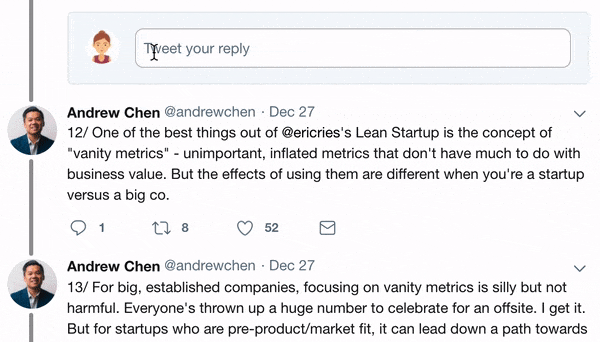
This is a deep point.
If you only sampled data at one month you shouldn’t “expect” to find the true arithmetic return. That was the point of this post.
breakingthemarket.com/the-arithmetic…
If you only sampled data at one month you shouldn’t “expect” to find the true arithmetic return. That was the point of this post.
breakingthemarket.com/the-arithmetic…
https://twitter.com/edwin_teejay/status/1430871714750210048
When you sample from a distribution which was created through compounding, you need a very large amount of samples to expect to “find” the arithmetic return with the sample because compounding skews the data.
So if the daily process is the foundational part of the game, and you know it’s distribution, and lets just say that the distribution there is normal, you can expect to “find” the properties of that distribution without any expected bias. Errors will be small and on both sides.
But once you compound that distribution for a month it becomes skewed, and a bias shows up. Most of the time, your sample will produce an arithmetic average lower than the true arithmetic average.
Now you can take a larger sample to help mitigate this, but…
Now you can take a larger sample to help mitigate this, but…
the sample size has to grow very fast each round to keep up. It grows so fast that after a good number of repetition, there won’t be enough samples available for it to keep up.
The strange thing with this is if you never looked at the daily data, but only sampled the monthly data, and knew it was created by compounding daily data, you should expect the value you calculate for the arithmetic return of the base process to be low.
So when I say that you won’t “find” the arithmetic return, this is what I mean.
This chart was in this post showed the arithmetic return changing with rebalance frequency.
breakingthemarket.com/the-shape-of-r…
This chart was in this post showed the arithmetic return changing with rebalance frequency.
breakingthemarket.com/the-shape-of-r…

This is strange because most think the arithmetic return shouldn't change with sample size or time. It's supposed to be constant.
But the arithmetic return you should expect find does depend on sample size and time.
That chart is what I just described shown in the real world.
But the arithmetic return you should expect find does depend on sample size and time.
That chart is what I just described shown in the real world.
With skewed distributions, your sample to find the arithmetic return will be biased. The more skewed the more biased.
Compounding skews distributions, therefore you won’t "find" the arithmetic return on compounded data.
You will find something closer to the geometric return.
Compounding skews distributions, therefore you won’t "find" the arithmetic return on compounded data.
You will find something closer to the geometric return.
• • •
Missing some Tweet in this thread? You can try to
force a refresh




